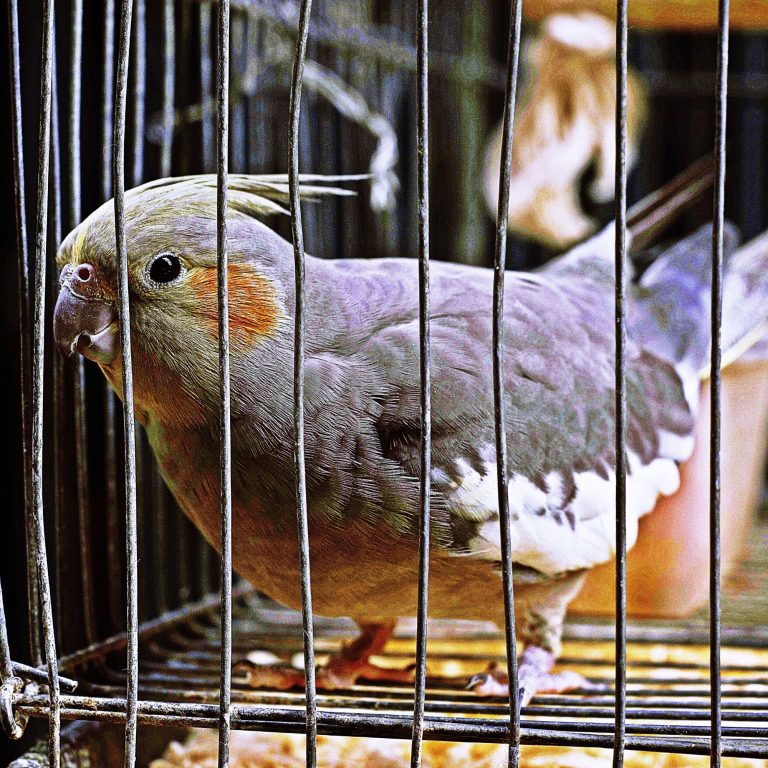Bring Your Fish Tank into the 21st Century with Automated Technology
The Evolution of Fish Tank Technology
In recent years, advancements in technology have revolutionized the way we care for our pets, including our beloved fish. Traditional fish tanks have now evolved into sophisticated automated fish tanks, offering a range of features and benefits that enhance the overall fish-keeping experience. Let’s explore the differences between traditional fish tanks and automated fish tanks, as well as the advantages of opting for automation.
Traditional Fish Tanks vs. Automated Fish Tanks
Traditional fish tanks have long been a popular choice for fish enthusiasts. They consist of a glass or acrylic tank with basic equipment, such as a filter, heater, and manual feeding. While traditional tanks provide a suitable environment for fish, they require manual intervention and monitoring.
On the other hand, automated fish tanks take fish-keeping to the next level by incorporating advanced technology. These tanks are equipped with various automated features that simplify maintenance and monitoring, making fish-keeping more convenient and efficient. With automated fish tanks, you can enjoy peace of mind knowing that your fish are being cared for even when you’re not physically present.
Benefits of Automated Fish Tanks
Automated fish tanks offer a multitude of benefits that make them an attractive option for tech-savvy pet lovers. Here are some key advantages:
-
Convenience: The automation of various tasks, such as feeding and water quality monitoring, reduces the amount of time and effort required for maintenance. You can have peace of mind knowing that your fish are being fed consistently and that the water conditions are being monitored without constant manual intervention.
-
Remote Monitoring and Control: Many automated fish tanks come with remote monitoring and control capabilities. This allows you to check on your tank’s conditions, such as temperature and pH levels, even when you’re away from home. By using a fish tank monitoring app, you can stay connected to your tank and make adjustments as needed.
-
Improved Water Quality: Automated fish tanks often incorporate water quality monitoring and maintenance systems. These systems continuously monitor parameters such as temperature, pH, and ammonia levels. If any parameter deviates from the optimal range, the system can automatically adjust it or send you alerts, helping to maintain a healthier environment for your fish.
-
Precise Feeding: Automated fish tanks typically come with automated feeding systems that dispense food at predetermined times and quantities. This ensures that your fish receive the right amount of food, reducing the risk of overfeeding or underfeeding. Some systems even allow you to create customized feeding schedules.
By embracing the advancements in fish tank technology and opting for an automated fish tank, you can enjoy the convenience and benefits that automation brings to the world of fish-keeping. From remote monitoring and precise feeding to improved water quality management, automated fish tanks provide a modern and efficient way to care for your aquatic pets. Explore the possibilities of smart fish tanks and discover the wonders of technology in the world of fish-keeping.
Key Features of Automated Fish Tanks
When it comes to automated fish tanks, there are several key features that set them apart from traditional fish tanks. These features include remote monitoring and control, automated feeding systems, and water quality monitoring and maintenance.
Remote Monitoring and Control
One of the standout features of automated fish tanks is the ability to remotely monitor and control various aspects of your tank. With the integration of smart technology, you can access real-time information about your tank’s parameters, such as temperature, pH levels, and water quality, from anywhere using a smartphone or tablet. This allows you to keep a close eye on your fish and make adjustments as needed to ensure their well-being.
By utilizing a fish tank monitoring system or a connected fish tank, you can receive alerts and notifications if any parameters fall outside the desired range. This gives you the opportunity to address any issues promptly and prevent potential harm to your fish.
Automated Feeding Systems
Another convenient feature of automated fish tanks is the availability of automated feeding systems. These systems allow you to set designated feeding times and portion sizes for your fish. With the touch of a button or through a fish tank monitoring app, the automated feeder will dispense the precise amount of food at the specified times, ensuring your fish are consistently and properly nourished.
Automated feeding systems not only save you time and effort but also help prevent overfeeding, which can lead to water quality issues and health problems for your fish. It’s important to choose a feeder that is compatible with your specific fish species and their dietary needs.
Water Quality Monitoring and Maintenance
Maintaining optimal water quality is essential for the health and well-being of your fish. Automated fish tanks often come equipped with sensors and monitoring devices that continuously assess key parameters such as temperature, pH levels, ammonia, and nitrate levels. These sensors provide real-time data that can be accessed through a fish tank monitoring device or a connected app.
By having access to this information, you can quickly identify and address any fluctuations or abnormalities in water quality. Some advanced systems even offer automated water changes or the ability to adjust water parameters remotely. Regular monitoring and maintenance of water quality are critical for the longevity and thriving of your fish.
To summarize, automated fish tanks offer remote monitoring and control, automated feeding systems, and water quality monitoring and maintenance as key features. These features not only make fishkeeping more convenient but also help to ensure the health and well-being of your aquatic pets. When considering an automated fish tank, it’s important to assess your specific needs and choose a system that suits your requirements and budget.
Enhancing Fish Tank Management with Automation
Automating your fish tank management brings a range of benefits, allowing you to have greater control and convenience in caring for your aquatic pets. With automated technology, you can enjoy remote access and monitoring, ensure consistent and precise feeding, and maintain optimal water conditions for your fish.
Remote Access and Monitoring
One of the key advantages of an automated fish tank is the ability to remotely access and monitor your tank from anywhere. By connecting your fish tank to a monitoring system, you can use a fish tank monitoring app to keep an eye on the temperature, water quality, and other important parameters. This allows you to check on your fish and tank conditions even when you’re away from home. For more information on fish tank monitoring systems, check out our article on fish tank monitoring system.
Consistent and Precise Feeding
Maintaining a regular feeding schedule is crucial for the well-being of your fish. With automated fish tank systems, you can ensure consistent and precise feeding without the need for manual intervention. These systems are equipped with programmable feeders that dispense the right amount of food at predetermined times. This helps to prevent overfeeding or underfeeding, promoting the health and growth of your fish. For more information on fish tank feeders, visit our article on fish tank feeding systems.
Maintaining Optimal Water Conditions
Water quality is essential to the health of your fish. Automated fish tank systems can help you maintain optimal water conditions effortlessly. These systems are equipped with various sensors, such as fish tank temperature monitors and fish tank pH monitors, that continuously measure and regulate the water parameters. This ensures that the temperature, pH level, and other important factors remain within the ideal range for your fish. By using a fish tank water quality monitor, you can easily keep track of the water conditions and take necessary actions to maintain a healthy environment for your fish. Check out our article on fish tank water quality monitors for more information.
By embracing automation in fish tank management, you can enhance your ability to care for your fish and simplify the maintenance process. With remote access and monitoring, consistent and precise feeding, and the ability to maintain optimal water conditions, you can create a thriving aquatic environment for your fish. Take the time to explore the available options and choose the automated fish tank system that best suits your needs.
Choosing the Right Automated Fish Tank System
When it comes to choosing the right automated fish tank system, there are several factors to consider. Automation can bring convenience and efficiency to your fish tank maintenance, but it’s important to select a system that suits your specific needs. Here are some key considerations to keep in mind:
Considerations for Automation
Before diving into the world of automated fish tanks, think about your goals and expectations. Consider the level of automation you desire and the specific features you’re looking for. Are you primarily interested in remote monitoring and control, automated feeding systems, or water quality monitoring and maintenance? Understanding your priorities will help you narrow down your options and make an informed decision.
Compatibility with Your Existing Setup
Another crucial aspect to consider is the compatibility of the automated fish tank system with your existing setup. Ensure that the automation system is compatible with the size, type, and requirements of your fish tank. Take note of the filtration system, heating, and lighting requirements, as well as any other specialized equipment you have in place. This will help you select an automated system that seamlessly integrates with your current setup without any compatibility issues.
Budget and Investment
Automated fish tank systems vary in terms of features and price range. It’s important to determine your budget and understand the long-term investment involved. Consider the initial cost of the automation system, as well as any additional expenses for maintenance, replacement parts, and software updates. It may be worthwhile to invest in a system that offers a balance between affordability and quality, ensuring that you get the most value for your money.
To help you make an informed decision, research different automated fish tank systems, read reviews, and compare prices. Remember, it’s important to prioritize the well-being of your fish and the longevity of your system over simply opting for the most affordable option.
By considering the factors mentioned above, you can choose the right automated fish tank system that aligns with your needs, preferences, and budget. Automation can revolutionize the way you care for your fish tank, providing you with enhanced control and convenience. To learn more about fish tank monitoring systems, check out our article on fish tank monitoring systems.
Integrating Automation into Your Fish Tank
Now that you’re familiar with the benefits of an automated fish tank and the key features it offers, it’s time to explore how to integrate automation into your own fish tank setup. This section will guide you through setting up an automated fish tank, provide troubleshooting and maintenance tips, and discuss expanding your automation system.
Setting Up an Automated Fish Tank
To set up an automated fish tank, you’ll first need to determine the specific automation features you want to incorporate. This could include a remote monitoring system for real-time updates on your tank’s vital parameters, an automated feeding system for precise and consistent feeding, or a water quality monitoring and maintenance system to ensure optimal conditions for your fish.
-
Remote Monitoring System: Install the necessary monitoring devices, such as a temperature monitor and a pH monitor, in your fish tank. These devices will continuously measure and transmit data to a central hub or a fish tank monitoring app on your smartphone. Make sure to position the sensors correctly and follow the manufacturer’s instructions for optimal functionality.
-
Automated Feeding System: Depending on the type of automated feeding system you choose, follow the manufacturer’s instructions to set it up. Some systems may require you to program feeding schedules and portion sizes, while others may utilize advanced technologies like voice control or smartphone app integration. Ensure that the system is properly calibrated to dispense the right amount of food without clogging or overfeeding.
-
Water Quality Monitoring and Maintenance System: Install the necessary sensors and equipment to monitor water quality parameters such as ammonia, nitrate, and nitrite levels. Connect the system to a central monitoring unit or a fish tank monitoring app for real-time updates on water conditions. Regularly calibrate and maintain the sensors to ensure accurate readings.
Troubleshooting and Maintenance Tips
Even with an automated fish tank system, occasional troubleshooting and maintenance will be necessary. Here are some tips to help you keep your system running smoothly:
- Regularly check the sensors and devices for any signs of malfunction or damage. Clean them as recommended by the manufacturer to maintain accurate readings.
- Inspect the automated feeding system to ensure it is dispensing food properly and that there are no blockages or mechanical issues.
- Monitor the data collected by the system, such as temperature and water quality readings, to identify any abnormalities. Take appropriate action to rectify any issues that may arise.
- Keep the automated system updated with the latest firmware or software versions provided by the manufacturer. This ensures optimal performance and access to new features or bug fixes.
Expanding Your Automation System
As you become more comfortable with your automated fish tank, you may consider expanding your system to include additional features or devices. Some possibilities include:
- Adding a lighting control system to simulate day and night cycles for your fish.
- Incorporating an automated water change system to ensure regular and consistent water changes.
- Connecting your fish tank automation system to a larger smart home ecosystem for seamless integration with other devices and automation routines.
When expanding your automation system, consider compatibility with your existing setup and ensure that any new devices are compatible with your current automation hub or app. Additionally, carefully assess your budget and investment capabilities to determine the feasibility of adding new features to your fish tank.
By following the steps for setting up an automated fish tank, implementing troubleshooting and maintenance practices, and considering expansion options, you can transform your fish tank into a cutting-edge, technology-driven aquatic ecosystem. Enjoy the convenience, precision, and peace of mind that automation brings to your fishkeeping experience.






